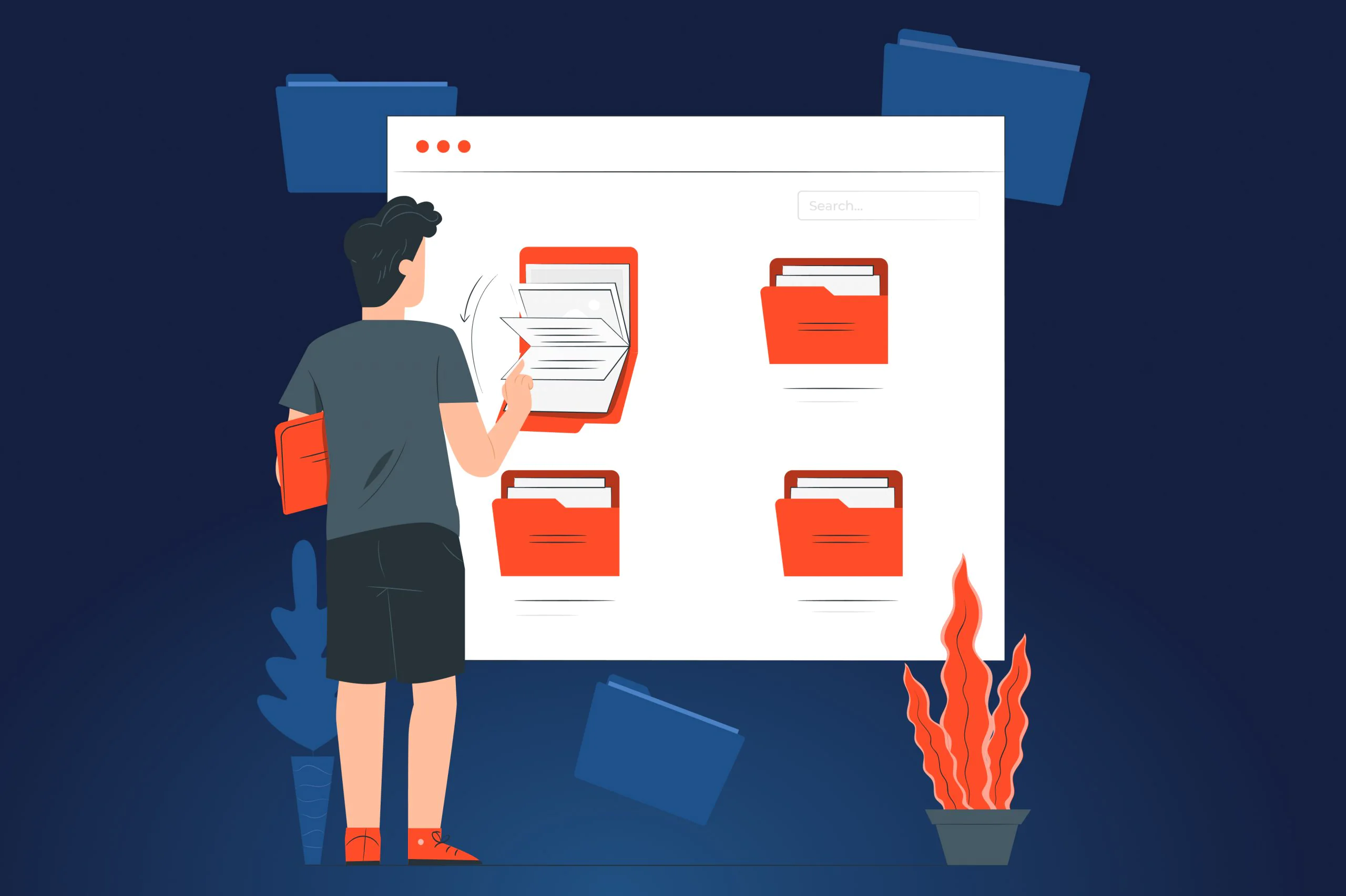Nobody checked this, but someone in Silicon Valley is definitely working on a data-driven solution for making a cup of coffee right now. So, such a thing as data analytics in recruitment doesn’t wow anyone today. Sage HR reports that 78% of companies are looking to advance their recruitment with data analytics solutions. That’s why your desire to upgrade your applicant tracking system (ATS) with a data-driven approach is understandable.
However, does it mean all these companies know well what they are going to do with tons of data? That’s the question which reveals that most businesses go way above their heads. Actually, the same report by Sage HR mentions that only 7% of organizations confirmed having sufficient skills in data analytics amongst their teams.
The JatApp team can’t help all the businesses that lack data analytics skills, so instead we introduce a comprehensive guide that will explain you how to use data analytics in recruitment to advance your ATS solution.
What is recruitment analytics and how does it work?
Data analytics in recruitment isn’t something you can easily pin down. First, we need to provide a clear definition of recruitment data analytics. So, here goes: Recruitment analytics is a solution that uses various smart algorithms to process recruitment-related data for improving the hiring process.
Besides, the second issue that will help us to harness data analytics in recruitment is to understand how it actually works. A recruitment analytics solution gathers and processes all the data from your ATS to determine patterns that can inform recruiters about the efficiency of the current hiring strategy in the company. The exciting thing about recruitment analytics is that it can work with any data available, and you can come up with sometimes weird yet meaningful conclusions.
ATS powered with data analytics can significantly benefit any company. There are several ways how your data-driven ATS can enhance the hiring process:
- Eliminate guesswork. With a data-driven approach to recruiting, HR departments will be able to make a hiring decision based on clear measurements that show all pros and cons of recruiting a particular candidate. Thus, relying on just a gut feeling won’t bother recruiting teams any longer.
- Upscale the quality of recruitment. Using predictive analytics in hiring can help recruiters understand whether candidates they hire will stay in company for long, and what issues can potentially arise within the entire span of applicant’s employment.
- Save costs. If a smart machine comes into play, it usually means that humans have less work to do. Consequently, companies will cut costs on waging their recruiting teams, as they’ll potentially need fewer people.
- Reduce time. By the same token, the hiring process becomes impressively rapid as data-driven ATS will offer a good decision much faster than any humans regardless how hard they scratch their heads.
- Advance candidate experience. Data-driven ATS also simplifies the hiring process for candidates as the solution can identify what repels job seekers from going ahead with the job application process. This information can guide recruiters about what they need to improve in their hiring activities.
- Minimize hiring bias. People can’t be free of bias just because of their nature. Instead, a smart digital solution is the one that will be blind to any racial, social, psychological, cultural, and personal characteristics of a job seeker and therefore make a decision based purely on a candidate’s professional qualities.
- Make planning more accurate. Recruitment analytics can provide hiring teams with a hint about how they should plan their future recruiting strategy based on the performance measures they have at the moment.
- Objectively assess hiring activities. Recruiters can simply take a look at any measure and draw a conclusion whether a relatable hiring activity works as it should.
- Access the most talented employees. Once recruiters have so much data on their fingertips, they can easily figure out which candidates are the best of the best and hire them.
What data to look for?
If you’re going to build a data-driven ATS, you actually should know what kind of data you need to gather to make your solution valuable to recruiters and companies. There are myriads of recruitment metrics that can be useful, some of them can be used solely by one company, so let us take a look at the most common types of data that are important to recruiting teams:
- Source. This metric shows where a candidate came from: a job board, LinkedIn, and so on.
- Time-to-fill. It’s a measure of time needed to fill a particular job position in a company.
- Time-to-hire. Hiring time is not the same as time-to-fill because time-to-hire focuses on a candidate’s time to undergo a recruitment process with a company.
- Diversity. Companies care about making their recruitment process diverse and equitable, which is why measuring whether a company’s talent pool is diverse enough is one of the most important metrics.
- Cost-per-hire. In order to optimize hiring costs, it’s essential to measure how much money is spent on recruiting one candidate.
- Quality of hire. Experiences of job seekers also matter as they determine whether a candidate will decide to proceed with the hiring process or not. Needless to say, any feedback from job seekers can provide companies with many valuable insights in this respect.
- Conversion rate. This metric shows how many candidates managed to complete a particular stage of the recruitment process and how many are left at the end of the hiring pipeline.
- Retention. Needless to say, companies have to know how many workers leave the company, how often, how long they stay, and what are the reasons for quitting the job.
- Bottlenecks. At some point, a company becomes unable to process all candidates fast enough, and many of them drop out without even being contacted. This metric helps to show when and why such bottlenecks happen, thereby guiding recruiters about what action they need to take.
- Urgency of hiring. A company may need to identify its priorities in hiring strategy, and such a metric can show what positions and skills are needed most urgently.
- Future employment needs. Professional aspirations as well as transformation of workplace duties surely will cause a need to train and educate employees for their growth and development. That is why prediction of relatable scenarios is important for companies that can provide necessary learning resources on time.
I have the data: what’s next?
As soon as you’ve decided what metrics you will use for your data-driven ATS, it’s time to define the actual process of recruitment analytics. You need to get several things done before you can start an actual development of the solution.
On top of that, we need to warn you that we won’t bring any specific features into a sharp focus here. Data-driven ATS solutions vary considerably, and it’s really difficult to say that some feature is a must and the other is not. Recruitment data analytics is a very broad concept, and you won’t find a one-size-fits-all solution.
Moreover, it’s important to understand how recruitment analytics tools work in general and what are the main aspects you need to know, while selection of features is a matter of business goals if not a taste.
Learn the basics
If you want your ATS to be powered with data analytics, you have to know the basics of data science. First of all, you need to learn how to work with databases: Excel reports, their management, sorting, and such are the fundamental skills you should learn.
Without knowing all these things, you won’t be able to come up with a bigger picture of architecture for your data-powered ATS. Check the image below to see what other skills you need to have a basic understanding of data science.
Select key performance indicators (KPIs)
To begin with, you shouldn’t confuse KPIs with data metrics we’ve discussed before. KPIs show the goals a company intends to achieve with recruitment, while various metrics are the evidence of how well each goal is achieved. In such a way, different metrics are applicable to a particular KPI.
The best way to simplify setting KPIs for recruitment teams with your ATS is to embed a hiring matrix that will guide HR specialists on what areas they can improve. Recruiters can weight the role of specific metrics against others to determine high, medium, and low priority performance indicators.
Additionally, the recruitment matrix is a good way to visualize a company’s priorities. You need to decide what recruiting aspects your ATS will address, and what exact metrics can be attached to each hiring area. However, it’s up to you whether you want your data-driven ATS to be customizable. Many companies may want to integrate their own KPIs and use your solution as a robust data analytics tool.
Establish analytics loop
When you’ve chosen priorities for your ATS, you can finally determine the process of recruiting analytics. You won’t believe it, but setting up this procedure is a breeze. Any data-driven ATS follows such steps:
- Data gathering. For starters, relatable data should be collected. For instance, if a recruiter wants to see an average time-to-fill for the last quarter, the system should bring all relevant data together.
- Data cleaning. Any database contains some clutter. Any incomplete and irrelevant data sets should be filtered out, while complete and reliable information only will undergo the analysis.
- Analysis selection. There are many ways your data can be processed, so the system should select the most valid one. Describing every single analysis will probably take us to write one more article. Give us some time, and we’ll nail the topic of data analysis methods in a separate blog post.
- Model training. That’s the step that your system will omit as soon as it’s trained enough to deliver the accurate results.
- Model running. It is the actual running of the analysis which is done in the blink of an eye. Unfortunately, it doesn’t look like a screen with falling green digits in the Matrix movie, which is why there’s nothing special to say about this step.
- Results presentation. The request is presented and desirably visualized for recruiters to make a wise decision.
Measure your KPIs
After your solution processes the data metrics for the chosen KPIs, it’s critical that these data transforms in some distinct measure recruiters can easily interpret. For example, if a company wants to decrease time and cost of hiring, time-to-fill and cost-per-hire metrics are involved. These metrics are expected to inform a recruiter about a current average time and costs spent on a hire, and by what percentage these parameters have changed over a particular period. We highly recommend visualization of all data mentioned above since it will help recruiters draw adequate conclusions and make sound hiring decisions.
Example of recruitment data visualization
A couple of hacks to keep in mind
Aside from the principles we’ve already discussed, we would like to share with you several useful tips that can significantly advance development of your data-driven ATS solution:
- Make your ATS collect all the data you see and don’t. You don’t have to focus your solution on specific types of data metrics. There are many unconventional forms of data that can be important. Try your best to collect as much of the different data and give it a go. Beyond a doubt, this course of action will require more resources, since the recruitment data analytics will get even more complicated. In return, your ATS can create an extra value to hiring teams as they’ll be able to plan their recruitment strategy with greater depth and efficiency.
- Link a candidate to a particular job position. Your ATS needs to connect every single job seeker to a specific position a company offers. As a result, the data analytics will deliver more insights and recruiters won’t be confused if a candidate applies for multiple positions at the same time. Also, it will be possible to offer a candidate a similar job position in case they didn’t succeed with one they chose, or a job seeker has skills relevant to the other position open in the company.
- Look for data patterns beyond the recruitment pipeline. In addition to collection of unconventional data, it’s possible to upgrade your ATS with data analytics that isn’t attached to the recruitment pipeline. The matter is that recruitment bias stems from many socio-economic factors that actually prevent candidates from getting into the hiring pipeline at all. Having an ability to minimize bias beyond the recruitment funnel will help many companies to really take care of diversity hiring instead of just giving lip service to it.
Feel comfortable to ask for help
Even though you’ve read this article, data analytics in recruitment still can be complicated to you. Because it really is. You can notice that we didn’t discuss any specific technology or features that you should include in your ATS solution as understanding of how data analytics in recruitment works is the main problem for many entrepreneurs.
As for technology and how to use it for upgrading your ATS, you can ask JatApp to provide your project with professional help. Our company develops digital solutions for HR and recruitment, and 99% of our customers are satisfied with the products we deliver.
If you need a hand with development of data-driven ATS, just get in touch with us. We’ll contact you and help you to enhance your ATS product with a data analytics solution.










